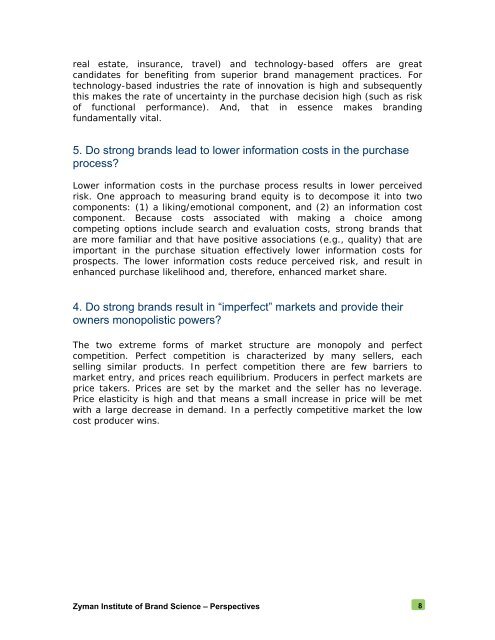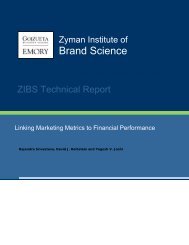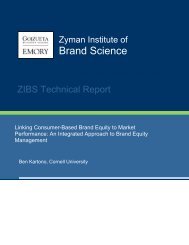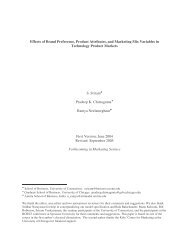The Executive's Guide to Branding - Emory Marketing Institute
The Executive's Guide to Branding - Emory Marketing Institute
The Executive's Guide to Branding - Emory Marketing Institute
You also want an ePaper? Increase the reach of your titles
YUMPU automatically turns print PDFs into web optimized ePapers that Google loves.
eal estate, insurance, travel) and technology-based offers are great<br />
candidates for benefiting from superior brand management practices. For<br />
technology-based industries the rate of innovation is high and subsequently<br />
this makes the rate of uncertainty in the purchase decision high (such as risk<br />
of functional performance). And, that in essence makes branding<br />
fundamentally vital.<br />
5. Do strong brands lead <strong>to</strong> lower information costs in the purchase<br />
process?<br />
Lower information costs in the purchase process results in lower perceived<br />
risk. One approach <strong>to</strong> measuring brand equity is <strong>to</strong> decompose it in<strong>to</strong> two<br />
components: (1) a liking/emotional component, and (2) an information cost<br />
component. Because costs associated with making a choice among<br />
competing options include search and evaluation costs, strong brands that<br />
are more familiar and that have positive associations (e.g., quality) that are<br />
important in the purchase situation effectively lower information costs for<br />
prospects. <strong>The</strong> lower information costs reduce perceived risk, and result in<br />
enhanced purchase likelihood and, therefore, enhanced market share.<br />
4. Do strong brands result in “imperfect” markets and provide their<br />
owners monopolistic powers?<br />
<strong>The</strong> two extreme forms of market structure are monopoly and perfect<br />
competition. Perfect competition is characterized by many sellers, each<br />
selling similar products. In perfect competition there are few barriers <strong>to</strong><br />
market entry, and prices reach equilibrium. Producers in perfect markets are<br />
price takers. Prices are set by the market and the seller has no leverage.<br />
Price elasticity is high and that means a small increase in price will be met<br />
with a large decrease in demand. In a perfectly competitive market the low<br />
cost producer wins.<br />
Zyman <strong>Institute</strong> of Brand Science – Perspectives 8





